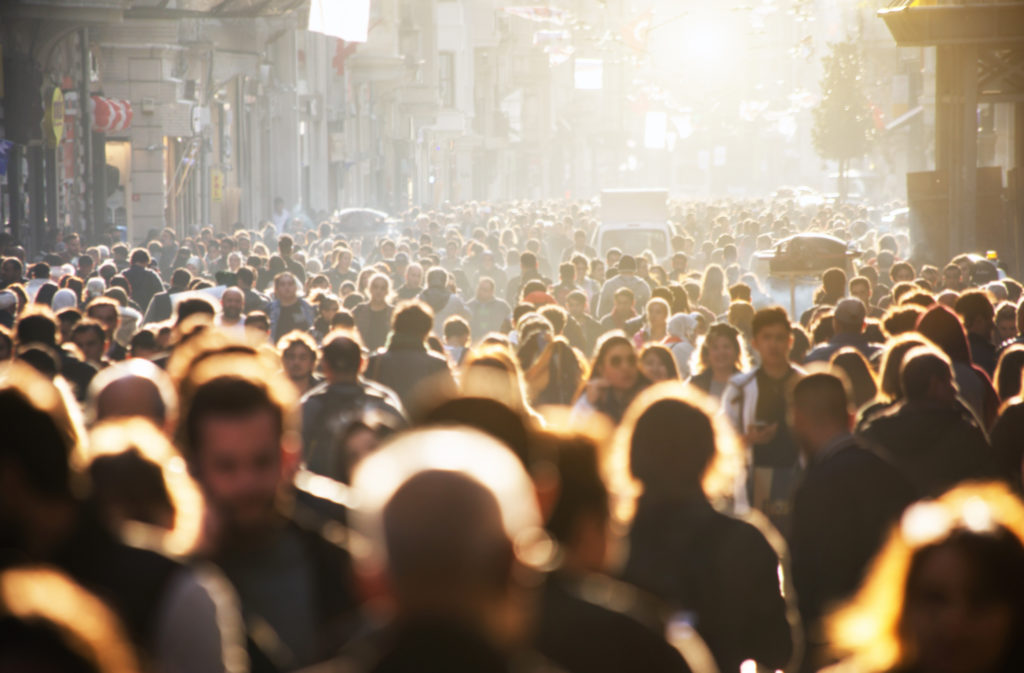Agoraphobia is a type of anxiety disorder in which individuals experience significant fear in relation to open or crowded spaces, particularly when escape may be difficult. Individuals with agoraphobia perceive these environments as dangerous, potentially humiliating, and/or significantly uncomfortable. In severe cases, this disorder can result in an individual refusing to leave their home. This fear usually relates to (1) concern that one might experience a panic attack in this environment and/or (2) one will be overwhelmed by anxiety to the point of “losing control” (e.g., fainting, vomiting, loss of bladder control, death).
Historically, agoraphobia was only used to describe one’s experience of panic disorder. Essentially, individuals who experienced recurrent panic attacks were either described as having agoraphobia or not. However, in the most recent version of the Diagnostic and Statistical Manual of Mental Disorders (DSM-5), agoraphobia is now considered its own, independent diagnosis.


The anxiety or fear experienced within this disorder is disproportionate to the circumstance and is accompanied by a variety of physical symptoms that occur in anticipation, as well as during the actual experience. Common physical symptoms include tachycardia, sweating, nausea, chest pain, GI issues, trembling, and dizziness.
In addition to physical symptoms, this condition causes individuals to avoid many situations, resulting in significant feelings of social isolation and difficulties maintaining a normal routine.
Although the specific feared circumstances largely depend upon the individual, some of the most commonly feared situations include: public transportation, stores, waiting in lines, crowded events, planes, parking lots, bridges, and parks.
Causes
There are a variety of circumstances that can increase the likelihood of developing agoraphobia. These include chemical or hormonal imbalances, genetic predisposition, personality characteristics (i.e., neuroticism), and previous trauma.
However, one of the most common occurrences is the development of agoraphobia following a panic attack. Panic attacks are incredibly uncomfortable episodes in which one experiences extreme physical symptoms of anxiety, as well as distressing thoughts such as the belief they are dying or having a heart attack.


Consider an individual who has a panic attack while waiting in line at a grocery store. This experience may cause them to significantly worry about having another attack. They may deem grocery stores as a trigger for panic, as well as potentially dangerous and humiliating. Given that they just experienced a panic attack, they may have particularly low self-efficacy in terms of their ability to cope with anxiety. Therefore, instead of enduring the anxiety associated with stores, they vow to never grocery shop in-person, which results in the development of agoraphobia.
Role of Avoidance
As mentioned, avoidance is a key component of this disorder. Unfortunately, avoidance behaviors significantly impact work, finances, relationships, well-being, and overall quality of life. For example, a student who fears and avoids large crowds may find it quite difficult to attend large lecture classes. This could result in them skipping class, which would directly affect their grades and possibly their ability to graduate. Additionally, receiving a poor grade could increase stress and potentially develop negative thoughts about one’s ability or self-worth. Given this example, it is unsurprising that agoraphobia is often comorbid with depression.
Avoidance is a difficult pattern to break, as these behaviors are immediately reinforced by a decrease in anxiety and distress. Additionally, avoidance eliminates the ability to challenge one’s assumptions about a situation or environment. Going back to the student who is afraid of large classes – if this individual never attends a class, they never have the experience of being “okay” and safe in class. Alternatively, if they were able to attend multiple classes without panicking, over time, they could learn that this space is not as dangerous as once believed – this is referred to as exposure, which is an essential component of psychotherapy for agoraphobia.
Unfortunately, these avoidance behaviors can create a barrier for treatment. If someone experiences severe agoraphobia in which they are unable to leave their home, they may have a difficult time initiating and adhering to treatment. However, the recent development and advancement of telemedicine may offer a unique solution for these patients.
Treatment for Agoraphobia


Agoraphobia is generally treated with medication, psychotherapy, or a combination of both. As is the case with most psychological disorders, a combination of therapy and medication is considered the most effective form of treatment.
Regarding medication, the classes most commonly prescribed for agoraphobia include selective serotonin reuptake inhibitors (SSRIs), serotonin-norepinephrine reuptake inhibitors (SNRIs), tricyclic antidepressants (TCADs), monoamine oxidase inhibitors (MAOIs), and benzodiazepines. In general, it often takes time for medication to begin demonstrating effects. Research suggests that a clinically significant change takes up to 8 to 12 weeks for some patients. Additionally, treatment effects related to anticipatory anxiety and avoidance can continue to increase over the first 6 to 12 months of treatment.
In terms of therapy, cognitive-behavioral therapy (CBT) is the most supported evidence-based approach for agoraphobia. CBT is an active treatment in which the therapist and the patient work together to address symptoms and facilitating factors. This approach typically requires 10-20 treatment sessions; however, improvements have occurred in as few as 1 session.
Within CBT for agoraphobia, there is a focus on (1) the feared environments, (2) sensations of panic/anxiety in the body, as well as (3) cognitive distortions or appraisals that contribute to distress (e.g., “If I go to the movies, everyone will hear me panic”). The course of therapy includes a variety of objectives such as psychoeducation, self-monitoring, relaxation/coping training, exposure, and relapse prevention.


Exposure exercises are one of the most powerful techniques for agoraphobia. This step in treatment breaks the pattern of avoidance and fear. Typically, exposure treatment begins by creating a fear hierarchy, in which an individual lists their least-feared to most-feared situations. Next, the individual is taught a variety of relaxation strategies, in order to increase their ability to control symptoms of anxiety. Once the individual has practiced relaxation effectively, they will begin working through their hierarchy. Exposure will begin with the least-feared stimulus. Once the individual is able to successfully experience this activity and effectively manage their anxiety, they will move to the next level. Exposure can occur “in-vivo,” meaning in real life, via one’s imagination, and through virtual reality. This technique is quite beneficial, as individuals gain incredible self-efficacy and confidence surrounding their ability to control anxiety symptoms. Additionally, these activities provide the ability to directly challenge some of the assumptions related to the likelihood of experiencing panic.
In addition to CBT, there is also some evidence supporting the use of psychodynamic therapy, interpersonal psychotherapy, and acceptance-based approaches. Of these approaches, acceptance-based orientations appear to be quite promising; however, additional research is needed.



